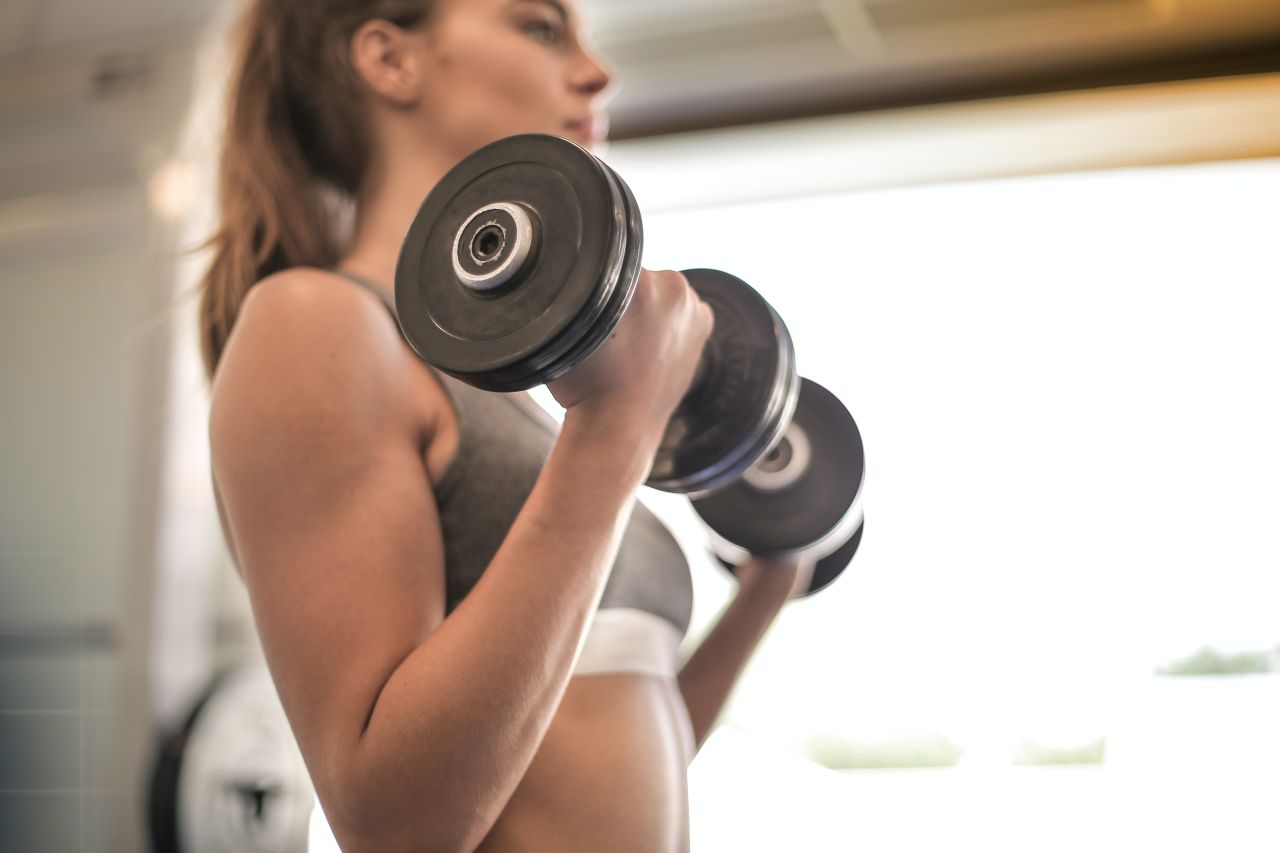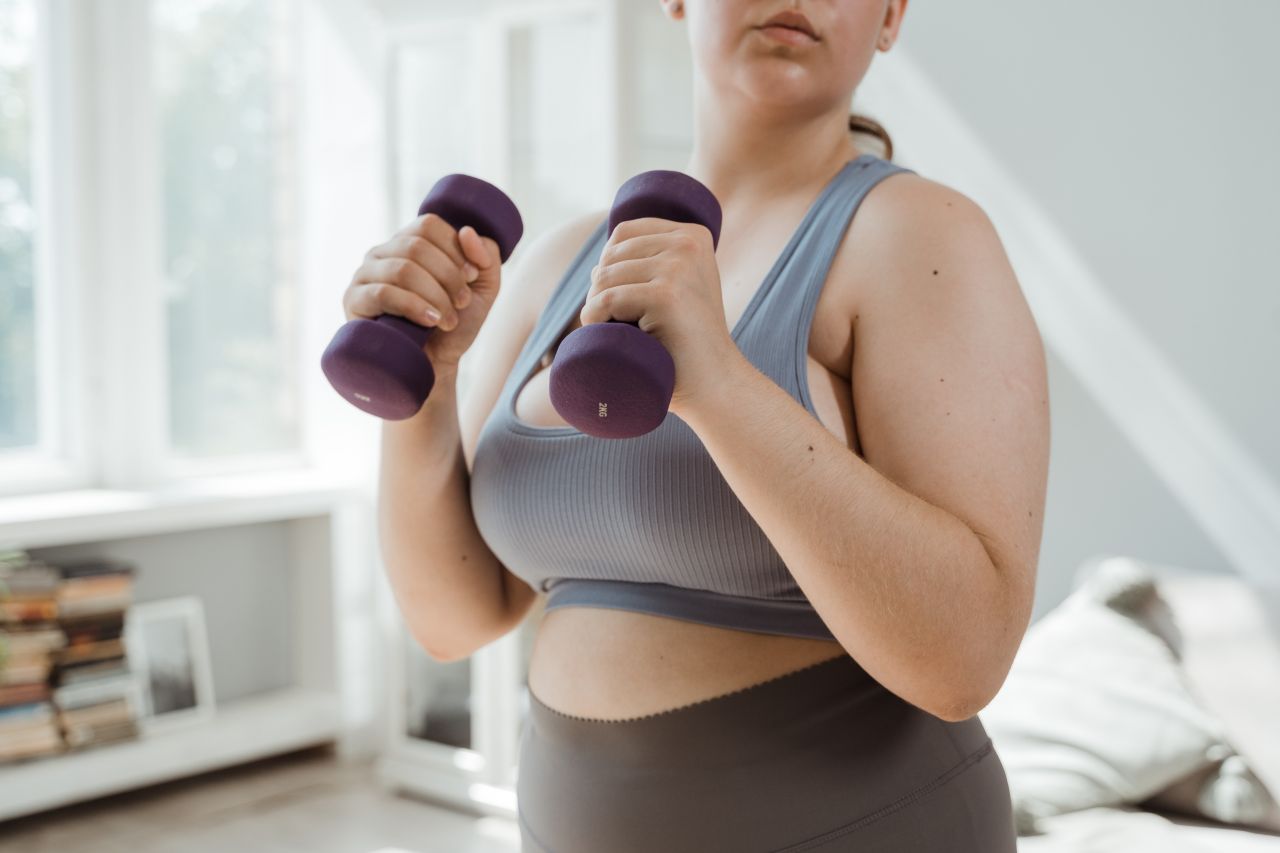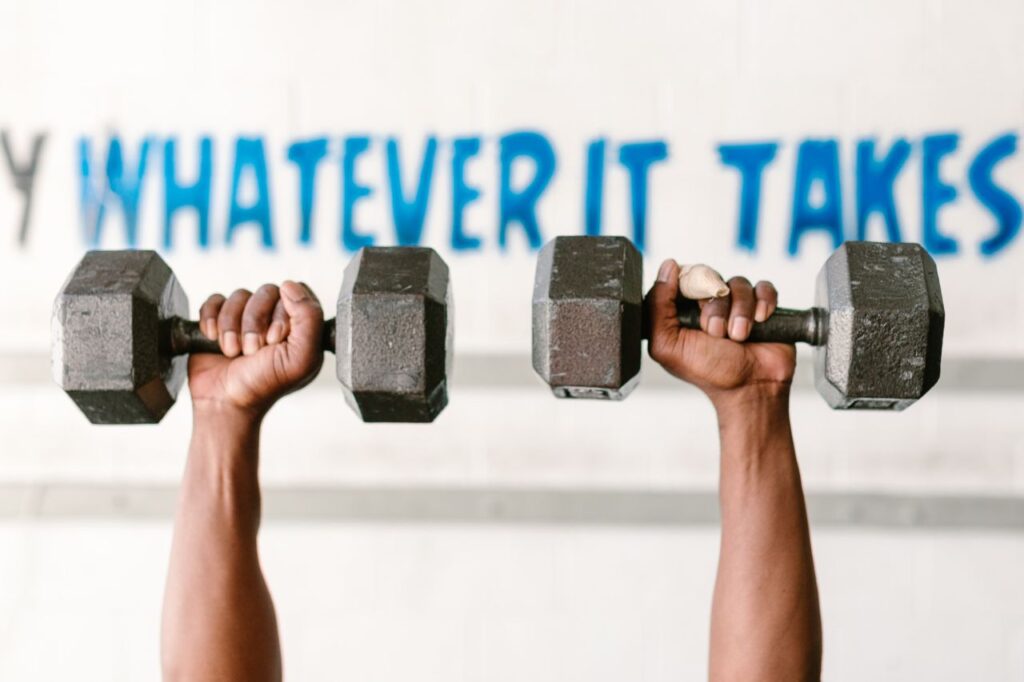Starting a dumbbell routine can be one of the best ways for beginners to build a solid foundation in strength and improve overall fitness.
With just a few simple exercises, dumbbells allow you to target multiple muscle groups effectively, making them ideal for anyone looking to get stronger, tone muscles, and boost endurance.
This guide covers essential dumbbell exercises that are beginner-friendly and easy to master. Each exercise is designed to help you strengthen specific areas like arms, back, chest, shoulders, and core.
Whether you aim to build muscle tone, increase stability, or simply get more active, these exercises provide the groundwork for a balanced workout supporting all-around physical wellness.
Let's get straight to the point
Starting a dumbbell routine is a great way for beginners to build strength, improve balance, and boost endurance.
Key exercises include the Alternating Dumbbell Curl for arms, Bent Over Row for back and shoulders, Dumbbell Bench Press for chest, and Front Squat for lower body strength.
Other important moves like Calf Raise for calves, Dumbbell Wood Chop for core, and Overhead Press for shoulder stability ensure a well-rounded workout.
Start with lighter weights, focus on form, incorporate rest days, and track your progress to achieve consistent results.
1. Alternating Dumbbell Curl – Strengthen Your Arms

The alternating dumbbell curl is a foundational exercise that targets the biceps and forearms. This exercise is perfect for beginners looking to tone and build arm strength.
How to Do It
- Stand tall, holding a dumbbell in each hand with palms facing inward.
- Curl one dumbbell toward your shoulder, rotating your wrist so your palm faces up.
- Lower slowly, then repeat with the opposite arm.
Benefits
- Improves arm strength and tone.
- Engages core muscles to maintain stability.
2. Bent Over Row – Build Back And Shoulder Strength
The bent-over row is ideal for strengthening the back, shoulders, and biceps. This exercise is beneficial for posture and helps beginners develop foundational upper-body strength.
How to Do It
- Stand with feet hip-width apart, knees slightly bent, and hold a dumbbell in each hand.
- Lean forward at the hips, keeping your back straight, and extend your arms toward the ground.
- Pull the weights toward your waist, squeezing your shoulder blades together.
Benefits
- Builds back and shoulder muscles for improved posture.
- Enhances stability and upper body strength.
3. Dumbbell Bench Press – Chest And Shoulder Stability
The dumbbell bench press is a beginner-friendly alternative to barbell pressing exercises. It helps strengthen the chest, shoulders, and triceps.
How to Do It
- Lie on a bench with feet flat on the floor.
- Hold dumbbells above your chest, palms facing forward.
- Lower the weights to your chest, then press back up to the starting position.
Benefits
- Builds chest and shoulder stability.
- Helps develop foundational upper body strength.
4. Hammer Press – Shoulder-Friendly Pressing
The hammer press is a variation of the bench press. You hold the dumbbells with a neutral grip (palms facing each other). It’s gentler on the shoulders, making it a great option for beginners.
How to Do It
- Lie back on a bench with a dumbbell in each hand, palms facing each other.
- Press the dumbbells above your chest, then lower back down.
Benefits
- Reduces shoulder strain.
- Engages chest and triceps without overloading the shoulder joints.
5. Front Squat – Lower Body Strength
The front squat with dumbbells is excellent for targeting the quadriceps and glutes. This move improves lower body strength, balance, and core stability.
How to Do It
- Hold a dumbbell in each hand at shoulder height.
- Squat down until your thighs are parallel to the floor, keeping your chest up and back straight.
- Push through your heels to return to standing.
Benefits
- Strengthens legs and glutes.
- Improves posture and core stability.
6. Calf Raise – Toning Calves
The calf raise is a simple yet effective exercise to target the calf muscles. Building strength in the calves is essential for balance and endurance, especially for beginners.
How to Do It
- Stand with a dumbbell in each hand, feet hip-width apart.
- Raise your heels off the ground, balancing on your toes.
- Lower back down slowly.
Benefits
- Builds calf strength and endurance.
- Enhances balance and stability.
7. Dumbbell Wood Chop – Engage The Core
The dumbbell wood chop twists the core and obliques, promoting core strength and stability. It is an excellent exercise for building a strong midsection.
How to Do It
- Stand with feet shoulder-width apart, holding a dumbbell with both hands.
- Start with the dumbbell near one hip, twist your torso, and lift it diagonally across your body.
- Bring the dumbbell back to the starting position and repeat on the other side.
Benefits
- Strengthens the core and obliques.
- Improves rotational stability and balance.
8. Triceps Kickback – Tone The Back Of The Arms
The triceps kickback focuses on the triceps at the back of the arms. This isolation exercise helps beginners build arm definition and strength.
How to Do It
- Stand with one knee on a bench and hold a dumbbell in the opposite hand.
- Keep your upper arm close to your body and extend your forearm back, straightening the arm.
- Return to the starting position slowly.
Benefits
- Tones and strengthens the triceps.
- Enhances upper arm endurance.
9. Farmer’s Walk – Full Body Conditioning
The farmer’s walk is a simple yet powerful exercise for building grip strength, core stability, and endurance. It’s perfect for beginners as it doesn’t require complex movements.
How to Do It
- Stand with a dumbbell in each hand and walk a set distance, keeping your core tight and back straight.
- Maintain a steady, controlled pace.
Benefits
- Increases grip strength and core stability.
- Builds endurance and overall body conditioning.
10. Lateral Raise – Develop Shoulder Muscles
The lateral raise is an effective exercise for building deltoid muscles and improving shoulder shape. It helps beginners develop strength in the shoulder region.
How to Do It
- Stand holding a dumbbell in each hand, palms facing inward.
- Raise your arms to the sides until they’re parallel to the floor, elbows slightly bent.
- Lower slowly back to the starting position.
Benefits
- Tones and strengthens the shoulders.
- Enhances upper body posture and shape.
11. Overhead Press – Shoulder And Upper Body Strength
The overhead press targets the shoulders and triceps, improving upper body strength and stability. It’s a staple exercise for beginners working on shoulder development.
How to Do It
- Hold a dumbbell in each hand at shoulder height.
- Press the weights overhead until your arms are fully extended.
- Lower the weights back to shoulder height with control.
Benefits
- Builds shoulder and triceps strength.
- Improves shoulder stability and posture.
12. Single-Leg Deadlift – Target The Glutes And Hamstrings
The single-leg deadlift is a challenging exercise that strengthens the glutes and hamstrings and improves balance.
How to Do It
- Stand on one leg, holding a dumbbell in the opposite hand.
- Hinge at the hips, lowering the dumbbell toward the floor as your other leg extends behind you.
- Return to standing, keeping your balance.
Benefits
- Strengthens glutes and hamstrings.
- Enhances balance and coordination.
13. Weighted Reverse Lunge – Strengthen Legs And Core
The weighted reverse lunge is ideal for beginners who want to strengthen their legs, glutes, and core. It also helps improve balance and stability.
How to Do It
- Hold a dumbbell in each hand at your sides.
- Step one foot back, lowering into a lunge position with your front knee over your toes.
- Push through the front foot to return to standing.
Benefits
- Builds leg and core strength.
- Improves stability and control.
Tips For Safe And Effective Dumbbell Workouts

Following a few essential guidelines can help beginners maximise the benefits of dumbbell workouts while minimising the risk of injury.
- Start with Lighter Weights
Begin with manageable weights to learn proper form. Gradually increase the load as your strength and technique improve. - Focus on Form Over Weight
Prioritising form helps prevent injuries. Only increase weight when you can maintain the correct technique. - Warm Up Properly
Begin with a light warm-up, such as dynamic stretches, to prepare your muscles for the workout and improve performance. - Incorporate Rest Days
Allow muscle recovery by resting between workouts. Recovery promotes muscle growth and prevents fatigue. - Track Your Progress
Recording your weights, reps, and sets helps monitor improvement and keeps you motivated. - Stay Consistent
Building strength takes time, so consistency is key. Follow a regular routine to gradually achieve your fitness goals.
Conclusion
Incorporating these dumbbell exercises into your routine is a fantastic way for a beginner to build strength, improve balance, and increase stability.
Focusing on proper form and gradual progress will set you up for success and reduce the risk of injury.
Starting with lighter weights, including rest days, and tracking your progress will help you stay motivated and ensure consistent improvements over time.
With a dedicated approach to these foundational exercises, you'll develop a solid fitness base that prepares you for more advanced movements in the future.
FAQs About Dumbbells
There is no one-size-fits-all answer to this question, as it depends on your fitness goals, your fitness level, your gender, and your budget. As such, we need to dig into this question based on all of these points.
The best way to answer this question is to break it down into three sections: building muscle, improving strength, and losing fat (a.k.a. getting the tone and shredded). Within these sections, we will provide options for beginners, men, women, and budget.
Your dumbbell weight requirements will depend on why you’re strength-training — whether you’re lifting weights for increased strength and endurance, for example, or power. Women lifting to increase muscle mass can use free weights between 5 and 8 pounds, while men can use 8- to 10-pound dumbbells to start.
Low reps with heavyweight tend to increase muscle mass, while high reps with lightweight increase muscle endurance.
This doesn’t mean that you have to rely on one method exclusively. On the contrary, alternating between the two may be the best approach for long-term success. Here’s why.
- Lifting heavy weights builds muscle, but constantly upping the weight exhausts the body. The nervous system must also adjust to the new fibre activation in the muscles. Lifting lighter weights with more reps gives the muscle tissue and nervous system a chance to recover while also building endurance.
- If you follow the same fitness program over a period of time, you will eventually hit the dreaded “plateau.” When your mind and body have adapted to the routine, it is no longer challenging, and you stop making progress. Changing things gives your body and nervous system the kick in the pants they need to start progressing again.
- Eventually, you’ll hit a point where you can’t lift any more weight or can’t lift the weight long enough to be effective. This can cause your form to break down, putting you at greater risk for injury. Switching to high rep/low weight for a time will allow you to continue making progress, concentrate on your form, and build up endurance so you can hit those heavy weights again.
These workout change-ups should be planned and strategic, such as every other workout, every other week, or a 6-8 week rotation. An unstructured, uneven approach will lead to uneven results.
It’s important to remember that many factors go into building muscle mass, apart from the workouts you perform.
Diet, genetics, metabolic rate, hormone levels, body type, and even your muscle fibre composition all contribute.
Dumbbells can be made using several different types of material, including rubber, neoprene and metal. You'll typically see dumbbells with cast iron or steel heads that are rubberized or coated in neoprene, but some are made entirely of cast iron or other types of metal.
The dumbbell is usually made of plastic, cast iron, and rubber/neoprene. Each of these dumbbell materials exposes its own benefits and weakness.

